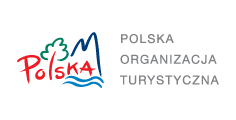Inowroclaw
Inowroclaw is a city and an urban municipality in the Kujavian-Pomeranian Province as well as the administrative seat of the county and the rural municipality of Inowroclaw. Between 1975 and 1998 the town administratively came under the province of Bydgoszcz. Inowroclaw lies along the banks of the River Notec which flows through the Inowroclaw Plain in the north-eastern regions of the Greater Poland Lake District. The city is considered the capital of the Western Kujawy region and is characterised as a lowland spa resort with sanatoria, health clinics and brine graduation towers. There are also numerous deposits of rock salt here which have been mined since ancient time and why Inowroclaw has sometimes been called „Salt City”.
The first mention of Inowroclaw dates back to 1185. The settlement was called Nowy Wladyslaw, in honour of Wladyslaw I Herman, a duke of the Piast dynasty, and later New Wloclawek by the residents of Wloclawek fleeing floods and looking for somewhere to resettle. The town grew around a large market and the nearby salt works. The accidental discovery of the historical traces of human activity as well as later excavations dating to the Middle Ages appear to show that probably the earliest salt works discovered on Polish soil were situated around present-day Inowroclaw.
The city received its city rights around 1238 from Prince Kazimierz Kondradowicz and between 1466 and 1772 was the capital of Inowroclaw Province incorporating the northwest lands of Kujawy and the cities of Bydgoszcz, Solec Kujawski, Koronowo, Gniewkowo, Podgorz, Slonsko, Raciazek, Sluzewo, Lipno, Dobrzyn and Radziejow. The city was also the seat of the Kujavian Princes and the Governors of Inowroclaw.
In 1812, the Emperor Napoleon Bonaparte set up his headquarters in Inowroclaw whilst on his way to Moscow. At the time of the Prussian Partition the city went through a period of „Germanisation”. Towards the end of the 19th century the city began to grow again which resulted in the building of new printing works, schools, a hospital, a railway junction, a spa centre, a farm machinery and a soda plant, a gasworks, a waterworks and an electricity generating station.
Inowroclaw returned to Poland in 1919. At this time the city, as did the rest of the country, suffered great economical hardship and this was demonstrated by the large amount of unemployment in the region which led to bloody unrest. Despite these economic and social difficulties, Inowroclaw still developed with the reopening of a glass factory and a shaft at the salt mine as well as the construction of an airport.
The basic elements utilised at the Inowroclaw spa resort are brine and mud, the lowland climate is mildly stimulating and there is a unique microclimate in the resort town, at the Brine Park which is reliant on the saline characteristics of the region. The activities of the spa were formally organised as early as 1876. The first buildings were designed for curative bathing treatments and the following ones as accommodation for their patients. In 1886 began treatments of children with rheumatic diseases. Today Inowroclaw specialises in the treatment of cardiovascular and respiratory diseases, musculoskeletal disorders and diseases of bones and muscles and of the metabolic system.
One of the main attractions, as well as being curative, recreational and relaxing, is the city’s saline graduation towers. Built in 2001, this structure, with a characteristic shape of a linked polygon, uses brine to generate natural therapeutic aerosols. Spending time in the active region of a working graduation tower has a soothing effect on the respiratory system and lowers blood pressure. The graduation towers, as well as the other health resort facilities, are located in the Brine Park and form an oasis of peace and tranquillity. The park is a great place for strolling because of all the greenery and the ubiquitous saline saturated spray.


